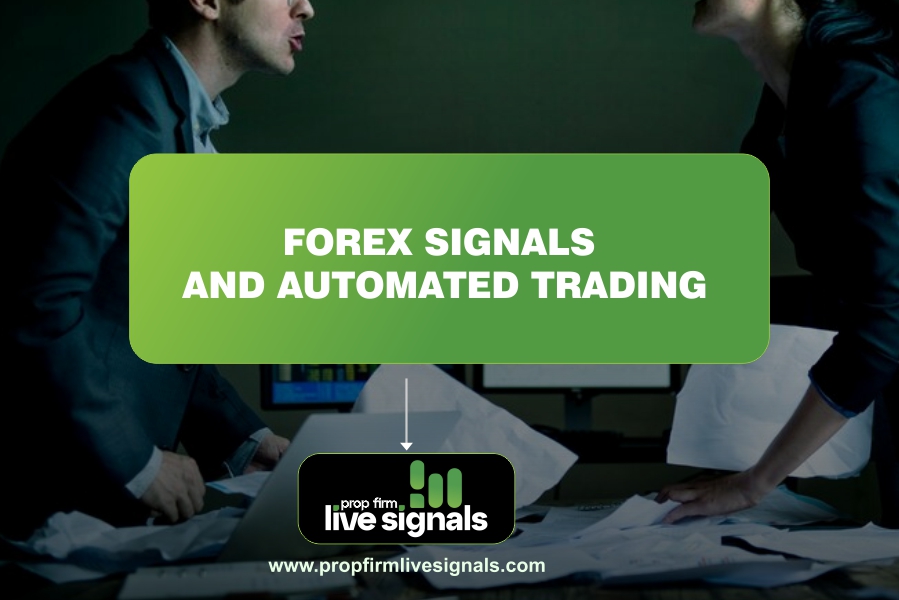Numerous techniques, including technical analysis, fundamental analysis, and even automated systems driven by sophisticated algorithms, can produce these indications. Automated trading has become a potent addition to Forex signals as technology advances, allowing traders to make trades quickly and precisely.
The complex relationship between automated trading and Forex signals is examined in this article, along with how they complement one another to strengthen trading tactics and boost overall performance.
Understanding Forex Signals
In essence, forex signals are trade advice that let you know when to buy or sell in the currency market. These signals fall into two primary categories: automated and manual.
Manual Signals
Expert traders or analysts who examine market conditions and offer insights based on their conclusions create manual signals. These signals generally include particular specifics such as the currency pair to trade, the direction of the trade (buy or sell), entry price, stop loss, and take profit levels.
Automated Signals
Conversely, trading software or algorithms that evaluate enormous volumes of market data in real-time produce automatic signals.
Based on technical indicators or key economic events, these systems employ preset parameters to find possible trading opportunities. Because automated signals can process data far more quickly than a human trader, decisions and actions can be taken more quickly.
How Forex Signals Are Generated
The following analytical methods are used in the creation of Forex signals:
- Technical analysis: This technique forecasts future movements by utilizing past price data and chart patterns. Traders can find entry and exit positions with the aid of indicators like Bollinger Bands, moving averages, and the Relative Strength Index (RSI).
- Fundamental Analysis: Currency prices can be greatly impacted by geopolitical events, interest rate fluctuations, and economic indicators. News releases and economic statistics are frequently used by traders to guide their trading choices.
- Automated Signal Generation: To provide real-time trading signals, sophisticated trading platforms employ algorithms that examine both technical and fundamental data. By swiftly adjusting to shifting market conditions, these systems can give traders up-to-date information.
The Role of Automated Trading
The use of computer algorithms to carry out trades based on preset criteria without the need for human interaction is known as automated trading. The following benefits of this strategy increase the efficacy of Forex signals:
1. Speed and Efficiency
When an automated trading system receives a signal, it can execute deals in milliseconds. Given how quickly values can fluctuate in the Forex market, this quickness is essential. Traders can reduce the risk of slippage, or the discrepancy between a deal’s predicted price and actual price, by automating trade execution.
2. Emotionless Trading
Controlling one’s emotions when trading is one of the biggest problems that traders encounter. Impulsive decisions that impair performance can result from fear and greed. By rigorously following predetermined guidelines and guaranteeing that trades are made only on the basis of data-driven indications, automated trading removes emotional bias.
3. Backtesting Capabilities
Before implementing their ideas in live markets, traders might backtest them against historical data using automated methods. By examining how their tactics would have performed in different market scenarios, this technique assists traders in determining the feasibility of their plans.
4. The process of diversification
Through the simultaneous execution of numerous deals across various currency pairs or financial instruments, automated trading allows traders to diversify their portfolios. Over time, this diversification can result in more consistent returns by distributing risk.
Combining Automated Trading with Forex Signals
The combination of automated trading and Forex signals produces a potent framework for successful trade execution. These components cooperate as follows:
1. Signal Reception and Execution
Signal services that offer real-time notifications based on market analysis are available to traders. An automated trading system can be used to execute a signal that is received, either manually or automatically. Trades are carried out instantly because of this connectivity.
2. Customization of Trading Strategies
Depending on their trading techniques, traders can configure their automated systems to exclusively react to particular signal kinds. A trader who focuses on scalping, for example, can set up their system to respond to short-term indications while disregarding longer-term advice.
3. Risk Management
Trading forex requires effective risk management. Depending on the signals they receive, automated systems can directly integrate risk management factors like stop-loss orders into their execution logic. This guarantees that losses be kept to a minimum even in the event of adverse market conditions.
4. Continuous Learning
A lot of automated trading systems make use of machine learning algorithms, which change over time in response to past performance information. These algorithms can improve the criteria they use to produce future signals by examining which signals have historically resulted in profitable transactions.
Types of Forex Signal Services
There are several kinds of Forex signal services available to traders, and each has special advantages.
- Paid vs. Free Signals: Paid signal services give more thorough analysis and tailored recommendations, while free signal services may offer more basic insights.
- Manual vs Automated Signals: Automated signals outperform manual signals in terms of speed and efficiency, but manual signals gain from human intuition and experience.
- Subscription-Based Services: A lot of signal suppliers give subscription plans that include access to cutting-edge technologies for market trend analysis, continuing assistance, and educational materials.
Common Mistakes When Using Forex Signals
When used properly, forex signals can greatly improve trading performance, but traders should be aware of the following common pitfalls:
1. Ignoring Market Conditions
Before acting on indications they receive, traders need to take the state of the market into account. Understanding economic or political events is essential for successful trading because they can have a significant impact on currency values.
2. Over Reliance on Signals
Even though Forex signals offer insightful information, making bad decisions can result from depending only on them without doing your own research. Signals should be used by traders in conjunction with their research and analysis as part of a larger plan.
3. Failure to Monitor Performance
Following trade execution, traders should keep a close eye on their positions in response to signals they receive. Finding areas for improvement in signal selection and execution tactics is made easier with regular performance reviews.
Maximizing the Value of Forex Signals Through Automation
Traders can use a number of tactics to optimize the advantages of Forex signals in an automated system:
1. Combining Technical Analysis with Signals
By adding more context for possible trades, combining technical analysis with incoming signals improves decision-making. Technical indicators should be used by traders to confirm signal suggestions before execution.
2. Backtesting Signal Strategies
Traders should backtest a strategy or signal provider against historical data to assess its long-term efficacy before depending on it. This procedure fosters confidence in the use of particular signals in automated systems.
3. Continuous Education and Adaptation
Because the Forex market is dynamic, success requires constant learning. Traders should keep up with market developments and be prepared to modify their plans in response to fresh data or evolving circumstances.
Frequently Asked Questions (FAQs)
Are forex signals trustworthy?
- The source of the signals and the analysis techniques employed are two of the many variables that affect how reliable Forex signals are. Some signal providers might not be as dependable as others, even though some have a successful track record. Before acting on any signal, traders must do their homework and weigh a variety of criteria.
Are free Forex signals available?
- Indeed, there are a lot of free Forex signal services out there, but they might not offer as much precision or information as premium ones. For novice traders, free signals can be an excellent place to start, but they should be used carefully and in conjunction with in-person examination.
Is automated trading suitable for beginners?
- Because it streamlines the trading process by performing trades according to predetermined rules, automated trading may be appropriate for novices. Before depending entirely on automation, novices should still take the time to educate themselves about the Forex market and gain a firm grasp of trading concepts.
How do I choose a good Forex signal provider?
When selecting a Forex signal provider, consider the following criteria:
- Track Record: Look for providers with a proven history of successful trades.
- Transparency: Choose providers who share their methodologies and performance metrics openly.
- Customer Reviews: Research reviews and testimonials from other users to gauge reliability.
- Support and Resources: A good provider should offer educational resources and customer support.




